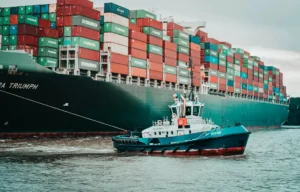The Multilateral Agreement on Investment (MAI) often resembles a complex labyrinth for those not versed in international finance. This pivotal treaty, standing at the crossroads of numerous global treaties and agreements, aims to simplify and boost investment activities worldwide. Our goal is to peel back the layers of the MAI, presenting it in a digestible format that not only enlightens but also engages readers keen on boosting their financial savvy.
At its heart, the MAI strives to lay down a universal framework for international investment. It is impossible to overstate the significance of the MAI in promoting global economic unity because it was born out of the desire to create a more open, just, and investment friendly global environment. We will navigate through the core objectives, the significant impact on the global economy, and the nuances that make the MAI a subject of vibrant discussion.
In an attempt to bring clarity to this intricate topic, we ensure to simplify the jargon and present the intricacies of the MAI in a manner that’s engaging for all. Whether you’re a finance professional or a curious novice, understanding the MAI’s role in global economics is crucial in today’s interconnected world.
Let’s embark on this journey to unravel the complexities of the Multilateral Agreement on Investment, making it approachable for everyone interested in the global economic landscape.
In a Nutshell
- Simplifying International Investment: The Multilateral Agreement on Investment (MAI) aims to simplify the global investment landscape, making it more transparent, equitable, and conducive to foreign investment.
- Fostering Economic Growth: By establishing a harmonized framework for international investment, the MAI encourages economic growth and development across member countries, leading to job creation and infrastructure development.
- Enhancing Global Cooperation: The agreement strengthens international cooperation by aligning investment policies across nations, thereby improving relations and contributing to global economic stability.
- Addressing Digital Economy Challenges: As the economy evolves, the MAI is adapting to new challenges such as digital currencies and e-Commerce, ensuring its provisions remain relevant and supportive of the digital economy.
- Promoting Sustainability and Ethical Investment: The MAI is increasingly focusing on sustainability and ethical investment practices, aligning with global initiatives for environmental conservation and social equity.
- Balancing Interests: A critical aspect of the MAI is finding the right balance between attracting foreign investment and allowing governments the autonomy to regulate in the public interest, especially concerning environmental protection and labor rights.
- Continuous Evolution: The MAI’s relevance depends on its ability to evolve and address emerging economic priorities, ensuring it remains an effective tool for promoting international investment in a rapidly changing world.
The Genesis and Purpose of the Multilateral Agreement on Investment
The journey of the Multilateral Agreement on Investment (MAI) traces back to the collective ambition of the mid 20th century to foster an environment conducive to cross border investments. Recognizing the necessity for a harmonized approach to international investment, the MAI was conceived to bridge the gap between nations, aiming to facilitate economic growth and development by providing a level playing field for investors worldwide.
Understanding the Core Objectives
The primary mission of the MAI is to establish a framework that promotes and protects global investments. This includes:
- Enhancing Transparency: Making investment policies and regulations clear and accessible to all stakeholders.
- Minimizing Investment Barriers: Streamlining procedures and reducing hurdles for investors looking to operate in foreign markets.
- Ensuring Fair Treatment for Investors: Creating equitable conditions for all investors, preventing discrimination, and promoting fair competition.
The significance of the MAI extends beyond the mere facilitation of international investments. It embodies a vision for global economic integration where businesses can thrive in a stable, predictable, and equitable international legal environment. By setting common standards and norms, the MAI aims to mitigate the risks associated with investing across borders, thereby encouraging more robust global economic cooperation.
While the aspirations of the MAI are commendable, its journey has not been without controversy. Critics argue that the agreement could overly favor multinational corporations, potentially at the expense of national sovereignty and the public interest. Developing nations, in particular, express concerns about their ability to negotiate terms that protect their economic autonomy while still attracting foreign investment.
In this chapter, we strive to present a balanced view, acknowledging the potential of the MAI to contribute positively to the global economy while also recognizing the legitimate concerns raised by its detractors. It’s essential to navigate these discussions with an open mind, considering the diverse perspectives and stakes involved.
As we delve deeper into the evolution, objectives, and debates surrounding the MAI, our aim is to provide a comprehensive understanding that empowers readers to grasp both its potential benefits and challenges.
Multilateral agreement on investment is essential to attract foreign investment.
Angel Gurría, former OECD Secretary General
Key Features and Provisions of the Multilateral Agreement on Investment
Diving into the Multilateral Agreement on Investment (MAI) reveals a set of core features designed to foster a stable and transparent international investment environment. This chapter highlights the pivotal provisions and mechanisms of the MAI, aiming to shed light on how it seeks to shape the landscape of global investments.
Dispute Settlement Mechanisms
A cornerstone of the MAI is its emphasis on fair and efficient dispute resolution. Recognizing the potential for conflicts between investors and states, the agreement outlines procedures to handle disputes impartially. These mechanisms ensure that investors have recourse to justice, while also safeguarding the rights of states to regulate in the public interest.
Investment Protection
Protection clauses within the MAI are critical in providing assurance to investors. These include safeguards against unfair treatment, such as expropriation without compensation, and ensure that foreign investments receive treatment no less favorable than domestic investments. Such protections are vital in encouraging investors to commit resources to foreign markets.
Intellectual Property Rights
The agreement recognizes the importance of protecting intellectual property (IP) as a catalyst for innovation and investment. By setting high standards for IP rights, the MAI aims to encourage creativity and technological advancement, ensuring that investments in new ideas are secure and rewarded.
Ensuring a Level Playing Field
At its heart, the MAI strives to eliminate discrimination between investors, promoting a level playing field. This includes commitments to national treatment (treating foreign investors no less favorably than domestic investors) and most favored nation treatment (ensuring investors from any member country receive the best treatment offered to any other).
Transparency and Predictability
Transparency provisions in the MAI mandate the publication of all laws, regulations, and procedures relevant to foreign investors. This transparency is crucial for creating a predictable investment climate, where businesses can make informed decisions with a clear understanding of the legal landscape.
Challenges and Criticisms
Despite its comprehensive framework, the MAI faces criticism for potentially prioritizing corporate interests over national sovereignty and public welfare. Concerns revolve around the possibility of the MAI limiting governments’ ability to regulate in areas like environmental protection, labor rights, and public health in favor of protecting investments.
The debate around these provisions underscores the need for a delicate balance between attracting foreign investment and preserving the ability of states to govern in the public interest. It highlights the ongoing dialogue necessary to ensure that the MAI evolves in a manner that respects both investor security and societal well being.
The Global Impact and Future Directions of the Multilateral Agreement on Investment
The Multilateral Agreement on Investment (MAI) has profound implications for the global economic landscape, influencing how countries attract foreign investment and integrate into the global market. This chapter examines the MAI’s impact on international trade and investment, as well as the evolving challenges and opportunities it faces in the digital age.
Facilitating Economic Growth and Development
By establishing a standardized legal framework for investment, the MAI plays a crucial role in facilitating economic growth and development across the globe. It encourages the flow of capital to emerging markets, which can lead to job creation, infrastructure development, and enhanced competitiveness. The agreement’s emphasis on transparency and predictability also makes countries more attractive to foreign investors, further stimulating economic activity.
Strengthening International Cooperation
The MAI fosters international cooperation by bringing countries together to agree on common investment standards. This collaborative effort not only improves relations among participating nations but also contributes to the stability of the global economic system. By aligning investment policies, the MAI helps mitigate the risks associated with cross border investments, promoting a more interconnected and cooperative international community.
Addressing the Digital Economy
As the global economy increasingly moves online, the MAI faces new challenges in adapting to the digital age. Issues such as data protection, digital currencies, and e-Commerce present novel considerations for international investment agreements. The MAI must evolve to address these digital transformations, ensuring that its provisions are relevant and conducive to the growth of the digital economy.
Sustainability and Ethical Investment
Another critical area for the future of the MAI is sustainability and ethical investment practices. As global awareness of environmental and social issues grows, there is a pressing need for the MAI to incorporate sustainability principles. This includes encouraging investments that support environmental conservation, social equity, and responsible governance, aligning the agreement with broader global sustainability goals.
The Road Ahead
Looking ahead, the MAI must navigate a landscape that is characterized by quick technological advancement, shifting geopolitical dynamics, and growing calls for sustainable and inclusive growth. Its ability to adapt and address these emerging priorities will be key to its relevance and effectiveness in promoting international investment. Engaging with a wide range of stakeholders, including civil society, environmental groups, and the business community, will be essential in shaping an MAI that reflects the diverse interests and concerns of the global community.
The Multilateral Agreement on Investment stands at the intersection of global economics and international law, offering a framework to support the flow of investments across borders. As we move into an increasingly digital and interconnected world, the MAI’s role in shaping the future of global investment cannot be understated. By embracing adaptability and inclusivity, the MAI can continue to serve as a pillar of international economic cooperation, fostering growth, and development for all.
Wrap Up
The Multilateral Agreement on Investment (MAI) represents a crucial effort to standardize and improve the global investment environment. By providing a framework that encourages investment, ensures fair treatment of investors, and promotes economic growth, the MAI plays a pivotal role in the global economy.
However, the agreement must continuously evolve to address criticisms, adapt to new economic realities, and ensure that it serves the interests of all stakeholders. The balance between promoting investment and protecting public interests is delicate, requiring ongoing dialogue and cooperation among nations.
As we move forward, the MAI’s adaptability will be key to its success. By incorporating considerations for digital transformation, sustainability, and ethical investment, the MAI can remain a cornerstone of international economic policy, fostering a stable, equitable, and prosperous global investment landscape.
FAQs

The Multilateral Agreement on Investment is a treaty negotiated among various countries to establish a comprehensive framework for foreign investment. Its primary goal is to create a predictable, secure, and equitable environment for international investors by standardizing investment regulations across member countries.
The MAI was created to facilitate global economic integration by promoting free flow of investments across borders. It aims to reduce barriers to foreign investment, ensure fair treatment for investors, and foster transparency and stability in the global investment climate.
Dispute Settlement Mechanisms: Providing a fair and efficient process for resolving conflicts between investors and states.
Investment Protection: Safeguarding foreign investments against unfair treatment and ensuring equitable treatment among investors.
Intellectual Property Rights: Setting standards to protect the intellectual property of investors, encouraging innovation and investment.
Transparency: Ensuring all investment related laws, regulations, and procedures are accessible and clear to investors.
Countries benefit from the MAI by attracting more foreign investment, which can lead to economic growth, job creation, and improved infrastructure. The agreement also helps countries integrate into the global economy by adhering to international standards and practices, enhancing their competitiveness and economic stability.
Challenges include balancing the rights and interests of investors with the need for countries to regulate in the public interest. Critics worry about the potential for the MAI to undermine national sovereignty, particularly in areas like environmental protection, public health, and labor rights. Ensuring that the MAI benefits all parties involved, especially developing countries, remains a significant challenge.
The MAI is evolving to address challenges such as the digital economy, sustainability, and ethical investment practices. Future iterations of the agreement will likely incorporate provisions that reflect these emerging priorities, ensuring that the MAI remains relevant and effective in promoting international investment in a rapidly changing world.
Article sources
At Capital Maniacs, we are committed to providing accurate and reliable information on a wide range of financial topics. In order to achieve this, we rely on the use of primary sources and corroborated secondary sources to support the content of our articles.
Primary sources, such as financial statements and government reports, provide firsthand evidence of financial events and trends. By using primary sources, we are able to directly reference information provided by the organizations and individuals involved in these events.
Secondary sources, such as financial analysis and commentary, interpret and analyze primary sources. While these sources can be useful for providing context and background information, it is important to use corroborated sources in order to ensure the accuracy and reliability of the information we present.
We take pride in properly citing all of our sources, both primary and secondary, in order to give credit to the original authors and to allow our readers to verify the information for themselves. We appreciate your trust in our website and are committed to upholding the highest standards of financial journalism.
- En.wikipedia.org – Multilateral Agreement on Investment – Wikipedia
- 1997-2001.state.gov – Multilateral Agreement on Investments
- Citizen.org – The Alarming Multilateral Agreement on Investment (MAI) Now Being Negotiated at the OECD – Public Citizen
- Oecd.org – Introduction – Multilateral agreement on investment
- Archive.globalpolicy.org – Multilateral Agreement on Investment
- International.gc.ca – Multilateral Agreement on Investment (MAI)
- Wto.org – A Multilateral Agreement on Investment: Convincing the Sceptics
























